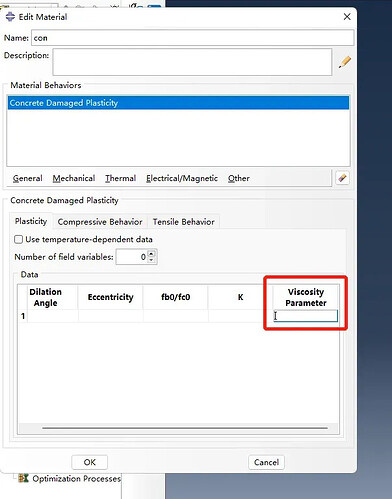-
Adjusting the Mesh Size in Abaqus
Simple Explanation: Experiment with different mesh densities to find the most suitable one.
Specific Operations: Typically, the appropriate mesh size is as follows: in the cross-sectional plane, the mesh should be 1/6 to 1/12 of the component’s length or width, with a length-to-width ratio between 1 and 2. In the depth direction, the length should be 0.6 to 2 times the length of the mesh in the cross-sectional plane. Aim to keep the mesh as cubic as possible, with a ratio between the lengths in different directions not exceeding a certain value, generally with the longest length in the depth direction.
Evaluation: This method is highly recommended, but it is time-consuming and computationally intensive. During batch modeling, typical components can be debugged with different mesh sizes to find the optimal density.
Ease of Operation: ★★★
Accuracy: ★★★★★ -
Changing the Tolerance
Simple Explanation: Increase the allowable error in iterative calculations.
Specific Operations: See detailed content below.
Evaluation: This method is the most effective, but it introduces some error. The curves after adjusting the tolerance generally have more steep regions and are less smooth. This is commonly used for simulating the elastoplastic phase, as large deformations in this phase are difficult to converge.
Ease of Operation: ★★★★★
Accuracy: ★★★ -
Modifying the Viscosity Coefficient (for Concrete CDP Model)
Simple Explanation: Increase the viscosity coefficient, originally 0, adjusting it between 1e-5 to 1e-7.
Specific Operations: For components involving concrete, if the CDP (Concrete Damage Plasticity) model is used, increasing the viscosity coefficient helps the component converge better, though the data accuracy may decrease.
Evaluation: This is a relatively easy adjustment but introduces some error. The peak values may be smaller than the actual values.
Ease of Operation: ★★★★
Accuracy: ★★★
-
Adjusting Minimum Step Size and Maximum Iterations
Simple Explanation: During iterative calculations, if the error exceeds the required value, iterations continue until the error is within the required range. If the maximum number of iterations is exceeded, the calculation stops. Therefore, the number of iterations should be set high, while the step size should be small to allow gradual progress. A very small step size (e.g., 1e-5) might allow the model to continue, but the system may terminate early if it’s too strict. Hence, a smaller minimum step size may benefit convergence.
Specific Operations: Typically, set the minimum step size to a very small value like 1e-35.
Evaluation: This method is effective, but it may result in a large ODB (output database) file, which consumes considerable computational resources.
Ease of Operation: ★★★★
Accuracy: ★★★★ -
Adjusting Thickness Integration Points (Shell Elements)
Simple Explanation: When integrating the thickness of shell elements, using more integration points (e.g., 3 or 5) improves accuracy, but higher-order equations may be harder to converge.
Specific Operations: Typically, a 5-point equation is used, but for smoother simulations, a 3-point equation can be used, though with a slight reduction in computational accuracy.
Evaluation: This is useful for shell elements, but its impact is limited.
Ease of Operation: ★★★
Accuracy: ★★★
-
Summary
Abaqus is used at different stages of writing a paper, including pre-experiment simulation, simulation of experimental components, parameter analysis, and mechanism analysis. -
For pre-experiment simulations, since the simulation values are only rough estimates of the component’s load-bearing capacity, a deviation within 20% is acceptable. In this case, any of the above methods can be applied to generate the curve.
-
For experimental component simulations, accuracy is paramount. Avoid tolerance adjustments that reduce precision, and keep the viscosity coefficient within a small range. The mesh should be adjusted to achieve the maximum possible plastic phase.
-
For mechanism analysis, since the entire process needs to be analyzed, slight tolerance and viscosity adjustments can be made to ensure the plastic phase is as long as possible for better analysis. However, tolerance and viscosity should not be overly adjusted, as this can cause the stress curve to become too steep, making it difficult to interpret the analysis.
-
For parameter analysis, the approach is more complex. Initially, focus on accuracy, and later, ensure the model is computationally feasible.
3 个赞

